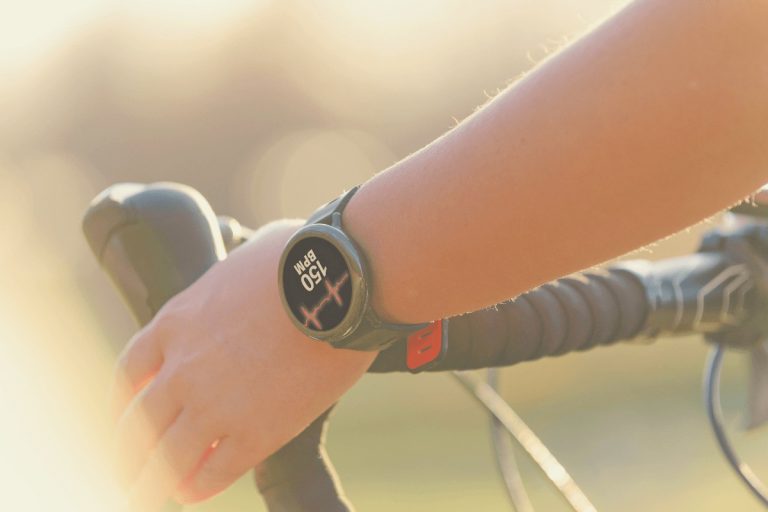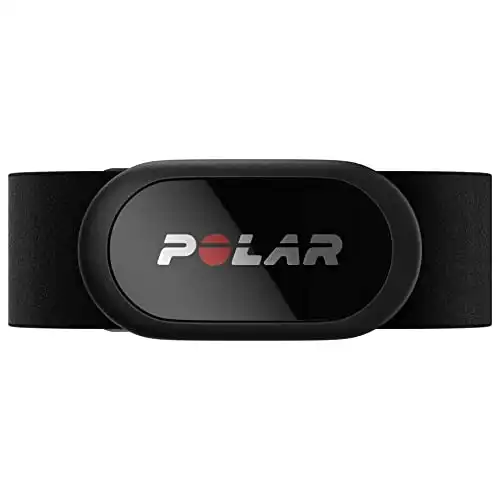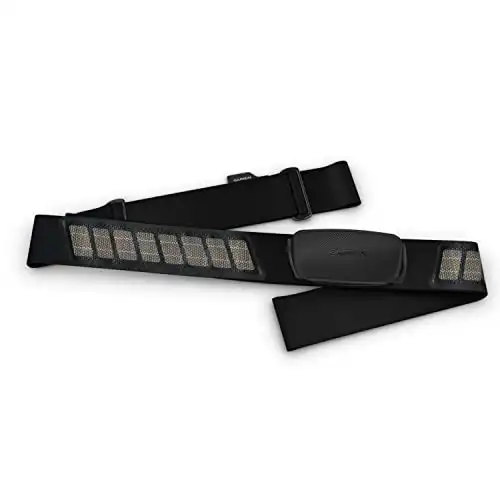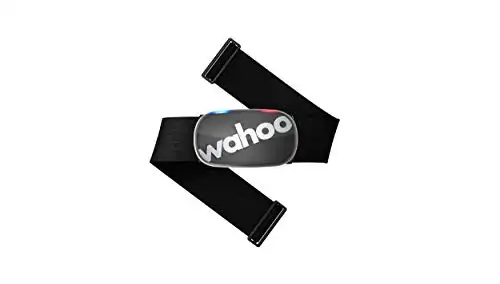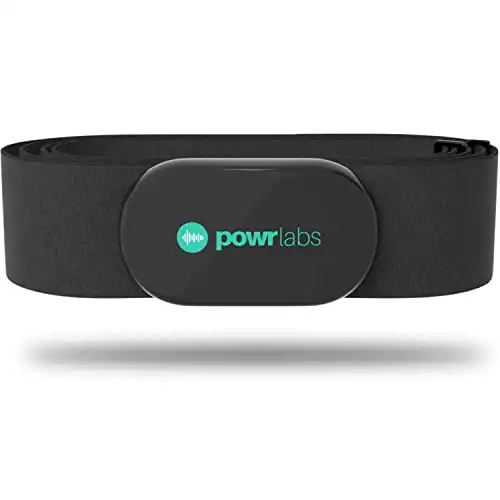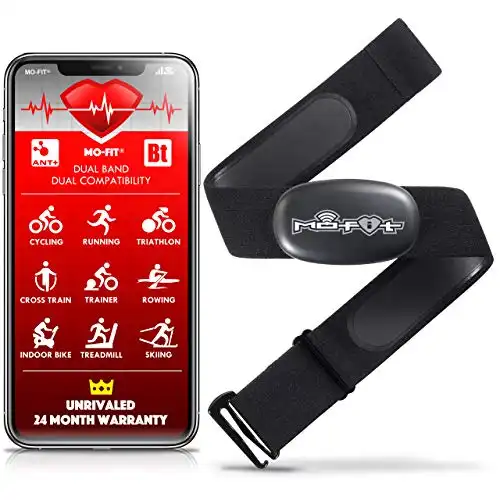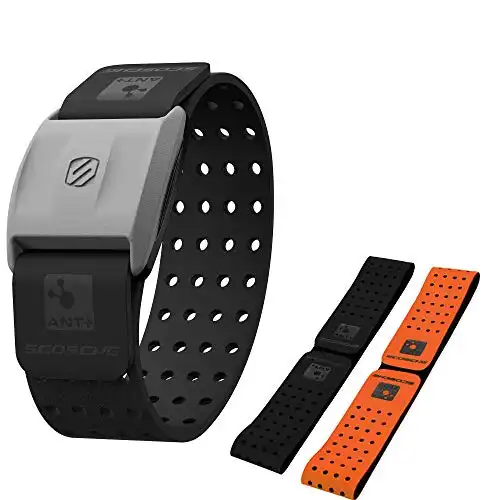If you feel like you’ve hit a plateau in your training, a heart rate monitor can help take you to the next level. It helps you get the most out of your fitness trackers and apps, pushes you a little harder to increase your VO2 max, and overall improves your performance.
But with so many heart rate monitors on the market, how do you know which is best for you? Fear not, as we’ve researched and compiled a list of the best cycling heart rate monitors. From sleek wristbands to chest straps, we’ve got you covered.
So, if you’re ready to take your cycling game to the next level, read on to find out which heart rate monitor is right for you.
In A Rush? Here Are Our Top Cycling Heart Rate Monitors
- Very accurate
- Durable
- Comfortable band that doesn’t cut into your skin
- Internal memory
- Three connection options - Bluetooth, ANT+, and 5kHz
- Lightweight
- Amazing battery life
- Bluetooth and ANT+ connectivity
- Easy syncing with Garmin devices
- Reliable and accurate
- Slim, lightweight design
- Easy, automatic pairing
- LED lights to indicate connection and data capturing
- Waterproof for submersion
- Affordable price
- Compatibility with most fitness apps
- Comfortable band with no hard plastic on your skin
- Free battery replacement within the first year
- Budget-friendly
- Lightweight, at 1.6 ounces
- Water and impact-resistant
- 24-month warranty
- Very accurate
- Comes with an additional band
- Waterproof up to 3 feet
- Good connectivity and syncing
Elevate Your Ride: Best Cycling Heart Rate Monitors Reviewed
Polar H10 Heart Rate Monitor
- Very accurate
- Durable
- Comfortable band that doesn’t cut into your skin
- Internal memory
- Three connection options - Bluetooth, ANT+, and 5kHz
- Pricey
- Syncing issues
Polar is a recognized leader and innovator in the heart rate monitor (HRM) market, renowned for its high-quality and durable products. This model is favored among top athletes, particularly cyclists, for its exceptional accuracy and endurance, accommodating various sports disciplines.
An important feature for cyclists is the band’s compatibility with all major fitness watches, smartphones, and HRM-compatible cardio equipment, including the popular Peloton bikes.
This allows you to sync your workout data to your preferred fitness app seamlessly. Polar’s app also thoroughly analyzes your training by calculating your calorie burn and heart rate – crucial for cyclists who need to monitor and adjust their intensity levels during exercise.
What makes this band stand out is its internal memory which can store data from one session at a time. This means you don’t need to worry about losing any HRM data during your long-distance bike rides.
Another significant advantage for cyclists is its comprehensive connectivity options, including Bluetooth, ANT+, and 5kHz. The band allows for multiple simultaneous connections, ensuring you can connect it to several devices at once – helpful for those cyclists who like to use various gadgets during their ride.
The Polar HRM band is entirely waterproof, a feature that ensures its functionality even in adverse weather conditions, a frequent challenge for outdoor cyclists. Moreover, the electrodes’ accuracy in this band improves with a bit of moisture, so you can keep pedaling and sweating without worry.
The comfort of the band is another cyclist-friendly feature. It’s machine washable and is more comfortable than many competitor bands. It won’t cut into your skin, an essential factor during those lengthy bike rides where comfort can affect performance.
The only drawback noticed is that the band has occasionally experienced syncing issues with certain smartphones. However, with its wide range of features and benefits tailored to cyclists, this product is a valuable tool for any serious cyclist.
Garmin HRM-Dual Heart Rate Monitor
- Lightweight
- Amazing battery life
- Bluetooth and ANT+ connectivity
- Easy syncing with Garmin devices
- Reliable and accurate
- Not waterproof
Garmin’s heart rate monitor band, designed with cyclists in mind, boasts an impressive 3.5-year battery life, ideal for long rides and excursions.
It offers secure Bluetooth and ANT+ connectivity with a 10-foot range, ensuring data transfer to your Garmin devices even in your saddle bag.
Weighing just 1.9oz, it’s non-intrusive and designed for comfort during cycling workouts.
The band’s slim, soft, and washable design ensures comfort and easy maintenance for long cycling sessions. While there are reports of the band sliding off during runs, this is less of an issue for cyclists due to the difference in body movement.
It’s worth noting that this heart rate monitor is exclusively compatible with Garmin devices. Syncing with devices like the Garmin Forerunner is seamless, offering integrated data tracking.
Although water-resistant for varied weather cycling, the transmitter can’t operate underwater, making it unsuitable for swimming. Overall, it’s an optimal choice for dedicated cyclists.
Wahoo TICKR Heart Rate Monitor
- Slim, lightweight design
- Easy, automatic pairing
- LED lights to indicate connection and data capturing
- Some users have problems connecting to their phones
- May become inaccurate over time
The Wahoo TICKR is an affordable, lightweight heart rate monitor (HRM), ideal for cyclists needing to stay conscious of their budget.
At just 1.7 ounces, it’s conveniently light and unobtrusive, ensuring you stay focused on the road and not your gear. Its slim fit and comfortable bands make it nearly invisible during rides.
It boasts broad compatibility, syncing with over 50 apps like Peloton and Strava, making it a versatile tool for tracking and enhancing your cycling performance. Seamless connectivity through Bluetooth and ANT+ means effortless data syncing to your computer or smartphone.
Key features include LED indicator lights, offering real-time reassurance that your HRM is connected and recording data accurately.
The only drawback is the potential slight inaccuracy in measurements over time. Nonetheless, its overall features and affordability make the Wahoo TICKR a solid choice for cyclists.
Powr Labs Bluetooth HRM
- Waterproof for submersion
- Affordable price
- Compatibility with most fitness apps
- Comfortable band with no hard plastic on your skin
- Free battery replacement within the first year
- Doesn’t sync directly with iPhone’s Health app
- The band is big and difficult to adjust
The Powr Labs Heart Rate Monitor could be the dream accessory for your cycling journey with its Bluetooth and ANT+ connectivity. It can seamlessly link up with your favorite apps like Strava, Garmin, Polar, and your Peloton bikes. Imagine tracking your progress with such ease!
But take note, if you’re an iPhone Health app user: you’ll need an Apple Watch to sync your data.
For your intense, sweat-dripping rides or those times you get caught in a surprise downpour, don’t worry. This device is designed to be both sweatproof and waterproof.
Though it’s not intended for swimming, it should handle those unexpected weather conditions without a problem. Remember to thoroughly clean and dry it after it gets wet to ensure it lasts.
Comfort won’t be an issue with this device. The band can be adjusted from 26 to 38 inches, and its softness makes it comfortable, with no hard plastic pressing against your skin. But if you have a smaller chest circumference, you might need to do a bit extra adjusting to get the fit just right.
Durability and value? This heart rate monitor scores are high. It comes with a full 12-month warranty and even offers a free battery replacement for the first year. Given that the battery life is around six months, you’ll likely take advantage of this offer in your first year.
You’ll appreciate how this model provides an accurate reading and pairs easily with your devices, making your performance analysis a breeze. And get this, it’s half the price of the Polar model.
Given its impressive features and the money you’d save, it could be a appealing alternative to the big-name heart rate monitors.
Mo-Fit Heart Rate Monitor
- Budget-friendly
- Lightweight, at 1.6 ounces
- Water and impact-resistant
- 24-month warranty
- Bulky design
- The band is not the most durable
As a cyclist, you’ll appreciate Mo-Fit’s budget-friendly heart rate monitor, boasting compatibility with various apps, fitness trackers, and smartphones. Imagine the convenience of syncing with your favorite cycling apps!
The key benefit for you is its waterproof casing, ideal for those unexpected showers during a ride. But keep in mind. It’s not designed for swimming! Additionally, the case is impact-resistant – a godsend if you’re prone to a few bumps and knocks during your cycling adventures.
Adding to the value is a 24-month full warranty. That’s two years of assurance that your investment is well-protected. Based on my experience with their customer service, you can expect a smooth, hassle-free process if you ever need a replacement.
Despite the slightly bulky appearance, you’ll barely notice its featherweight design of only 1.6 ounces on your rides.
It includes a comfortable elastic strap. While not the most durable, it’s soft and comfortable against your skin. You might consider getting a replacement over time if you’re a daily commuter.
Scosche Rhythm+ HRM Armband
- Very accurate
- Comes with an additional band
- Waterproof up to 3 feet
- Good connectivity and syncing
- Pricey
- The velcro attachment can be uncomfortable
As a cyclist, comfort, and functionality in an HRM are crucial for you, and Scosche’s model, with its neoprene armband, fits the bill perfectly. Eliminating the often uncomfortable chest band in favor of an armband makes your rides more comfortable.
This HRM features an additional armband, perfect for when the first one wears out or goes missing during your cycling adventures. The convenience of dual connectivity via Bluetooth and ANT+ ensures seamless syncing with your devices or gym equipment.
The HRM pairs effectively with your phone, smartwatch, and tablet. Its compatibility with popular fitness apps lets you effortlessly track your heart rate during rides.
Unpredictable weather shouldn’t hinder your training. With the Scosche model being waterproof up to 3 feet (1 meter), neither a rainy day nor a sweaty summer ride will disrupt your heart rate tracking. If swimming is part of your training, you can even wear this HRM, although its accuracy may vary in water.
The armband design is functional for cycling, and the velcro attachment is robust, providing a secure fit. Finding the perfect tightness might take some adjustments, ensuring it doesn’t interfere with your movements.
What To Look For In A Heart Rate Monitor For Cycling
A heart rate monitor is an excellent addition to any cyclist’s toolkit. They help you push yourself a little harder or, on the contrary, avoid overtraining. But picking the right one for your needs can be tricky if you’re new to the game and don’t know what to look for.
These are some of the things you should pay attention to when buying a new HRM.
Accuracy
While many use a smartwatch or fitness band to keep track of their workouts, using a HRM makes the reading more accurate. They usually measure your chest instead of your wrist, so there’s no lag.
An American College of Cardiology study found that wrist-worn heart rate monitors were less accurate than standard chest straps. They found that a traditional chest strap was the “most accurate regardless of the workout intensity or whether someone was using the treadmill, elliptical or stationary bike.”
Granted, this research is a couple of years old, and technology is continuing to improve. However, at this stage, a chest HRM is still the closest to an electrocardiogram (EKG), which is the gold standard for measuring your heart rate.
Connectivity
Most HRMs come with a Bluetooth connection that syncs the data with an app on your phone. Some also include ANT+ connectivity, which means you’ll be able to sync the HRM with certain pieces of gym equipment.
The best cycling heart rate monitors have the option of multiple connections simultaneously; this means you can pass the data to your Peloton bike while tracking it on your iPhone’s Health app.
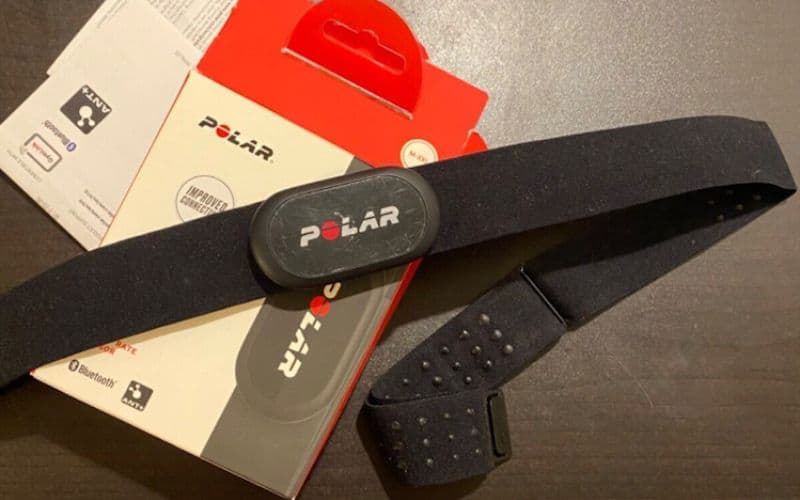
Compatibility
Most importantly, your HRM can be paired with your specific phone or fitness watch. If you’re unsure whether your fitness tracker is compatible, read the company’s website or contact them before purchasing.
If you have a Garmin or Polar fitness watch, using the same brand for your HRM is always best. It will make your life much easier as they’ll always pair and sync seamlessly when combined with the same manufacturer.
In fact, the Garmin HRM only syncs with other Garmin devices.
Another thing to note is that we all have our preferences for the fitness apps (Strava, MapMyRide, etc.) we use to review our data. Most of the HRM models we included in this list sync with a wide selection of apps.
But if the one you’re using is not that common, make sure it’s compatible before buying.
Fit
Fitting an HRM is easier for cyclists than for many other athletes. The strap doesn’t slide off as easily as in fitness classes, running, or other sports with lots of up-and-down movement.
Still, make sure you’ve got the right fit for the strap when you’re buying, or you might notice it sliding off when you’re out on the road!
Some of the models can be too big for smaller chests, especially women. If that’s your case, the Scosche HRM Armband can be the right option, as it takes your heart rate from your forearm.
Price
HRMs can be a pricey addition to your cycling gear, but they come for all budgets.
A pricier model may have a better quality build that lasts longer than a cheap one, but today you can find decent quality at half the price of more expensive brands.
Waterproofing
Any HRM must be water-resistant to handle sweat or a storm surprising you on your rides. Some are waterproof for submersion or a shower; others can even track your swimming data!
Think about what use you plan to give your HRM and whether you’ll need it for multiple sports (i.e., triathletes).
Comfort
Since you’ll be wearing your heart rate monitor on your chest for hours when riding, it’s essential to be comfortable.
The material is relevant, especially for women, as some bands can dig deep into the skin of your chest when moving.
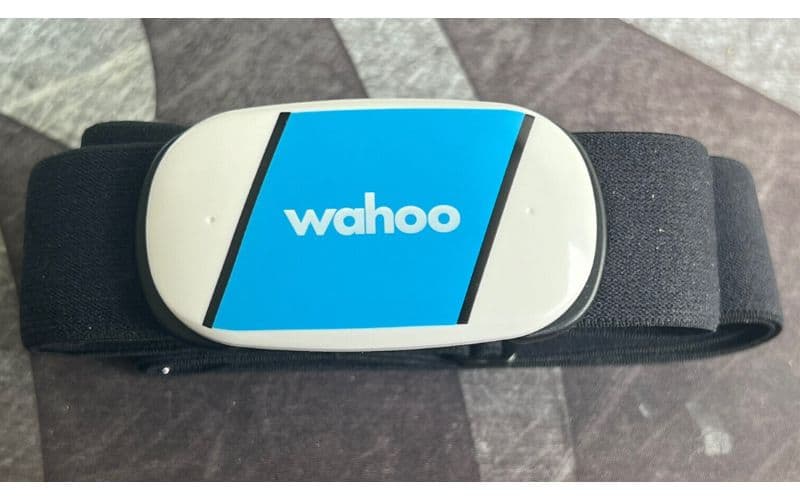
Final Thoughts – Best Cycling Heart Rate Monitor
The Polar H10 Heart Rate Monitor is the best cycling monitor. It’s not the newest and most exciting product on the market, but it’s been the favorite of everyday users and pro athletes for years because of its robust quality.
Polar’s measurements are accurate, and the connectivity options with Bluetooth, ANT+, and 5kHz are the best on the market. It’s also compatible with most fitness apps, trackers, and smartphones.
As for the fit, this model has an amazingly comfortable band that doesn’t dig into your skin, which is especially important on long rides.
Overall, it’s a top-quality product that’s worth your investment.
Frequently Asked Questions
Can a heart rate monitor help me improve my cycling performance?
Absolutely! A heart rate monitor provides data that can be invaluable for structuring your cycling training.
Knowing your heart rate zones allows you to tailor your training sessions to improve endurance, speed, power, or VO2 max.
Additionally, by monitoring your heart rate over time, you can assess your fitness progression, recovery, and even detect signs of overtraining or potential health issues.
How accurate are heart rate monitors for cycling?
The accuracy of heart rate monitors has improved greatly over the years.
High-end models like the Garmin HRM, Wahoo TICKR, and Polar H10 are known for their impressive accuracy. They provide real-time data that helps cyclists monitor and manage their training intensity.
However, it’s important to remember that numerous factors like placement, fit, and skin contact can influence the readings.
What’s the difference between chest strap and wrist-based heart rate monitors for cycling? Which one is better?
Chest strap monitors like the Polar H10 measure heart rate using electrical signals, which generally provides more accurate and consistent readings.
Wrist-based monitors, like those found on fitness trackers, use optical sensors to detect blood flow. While they offer more comfort and convenience, they might not be as precise, particularly during intense workouts.
However, improvements in technology are reducing this gap. Your choice will depend on your personal comfort, workout intensity, and precision needs.

